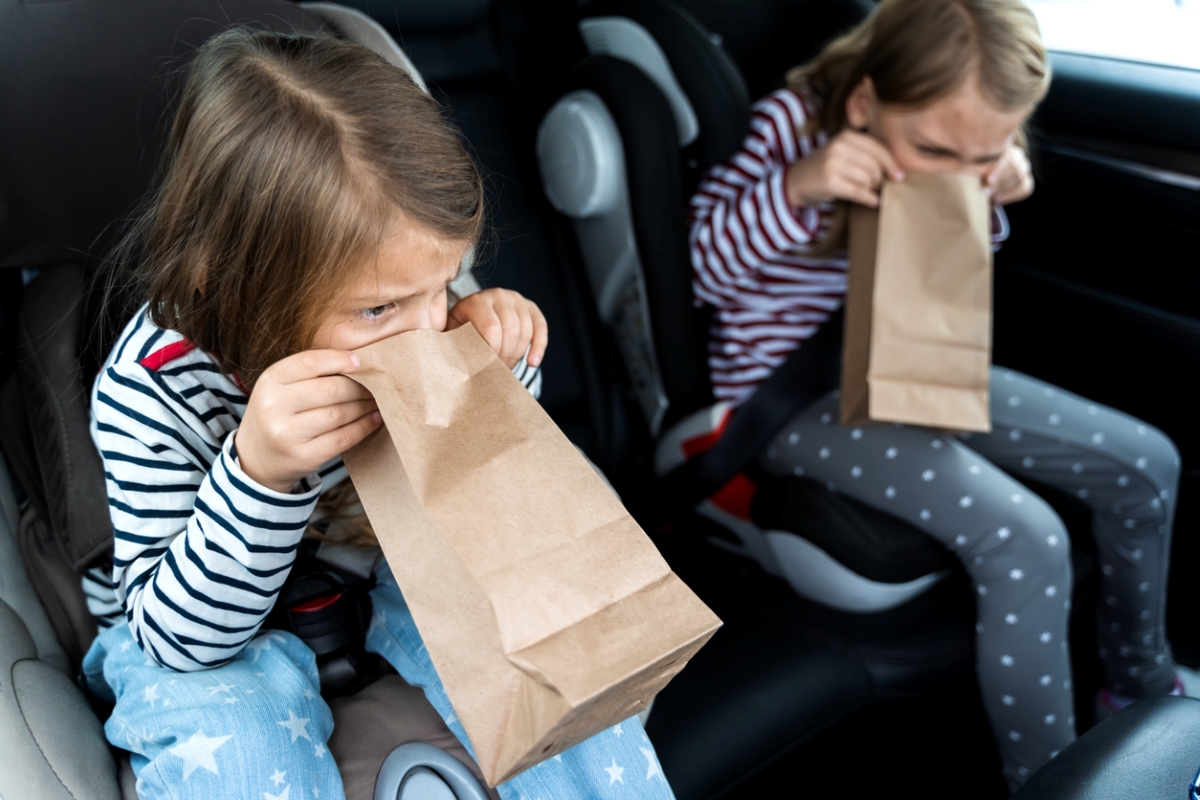Experts advise that parents and travellers should be cautious when trying out remedies seen online and remember that proven medical guidance is always the safer option.
Published Aug 19, 2025 | 10:15 AM ⚊ Updated Aug 19, 2025 | 10:15 AM

Motion sickness. (iStock)
Synopsis: Dr Shobana explained that parents can follow a few simple steps before and during travel. She advised avoiding fried or fatty foods and instead offering children a bland diet rich in carbohydrates. ‘‘Meals should be given at least two hours before the journey begins,’’ she mentioned, stressing that timing and diet play a big role in preventing nausea.
Social media has become a place where people discover not just entertainment but also tips and tricks for everyday life. From culinary shortcuts to household ideas, and even health remedies, it often serves as the first stop when someone is looking for an easy solution.
The viral nature of these platforms means that even a single idea can quickly snowball into a trend adopted by thousands.
In a similar fashion, a video on X showing a mother try different hacks on her child during a car ride like placing bandages on the belly button, sticking patches behind the ears, and putting wristbands on both hands to ease travel sickness has garnered a lot of views. These kinds of clips have become part of the larger wave of viral hacks that people watch, share, and sometimes try out themselves.
While such videos often catch attention and spark curiosity, doctors point out that these methods may not work for everyone. What seems helpful in one case might not have any effect in another, and sometimes the comfort people feel could simply come from the belief that the hack will work.
Experts advise that parents and travellers should be cautious when trying out remedies seen online and remember that proven medical guidance is always the safer option.
Dr Shobana, Consultant, Paediatrician and Lactation Specialist at MGM Malar, noted that the popular hacks circulating on social media, such as wristbands, patches, and similar remedies, may have only limited benefit. ‘‘These are said to theoretically exert some relief on the pressure points,’’ she said to South First.
However, she cautioned that these measures are not universally effective. ‘‘Normally we don’t recommend it from our side because it doesn’t work out for everybody. If it works, well and good, they can continue, otherwise it’s not something we advise,’’ she added.
Turning to medically proven measures, she explained that parents can follow a few simple steps before and during travel. She advised avoiding fried or fatty foods and instead offering children a bland diet rich in carbohydrates. ‘‘Meals should be given at least two hours before the journey begins,’’ she mentioned, stressing that timing and diet play a big role in preventing nausea.
Dr Shobana also suggested seating children in the front or in the middle of the back seat and encouraging them to look outside the vehicle rather than focusing on books or screens. ‘‘Listening to soft music or audio stories diverts their attention and helps in controlling motion sickness,’’ she highlighted.
She pointed out that light snacks and natural aids can provide comfort during travel. According to her, ginger cookies and inhaling fragrances such as peppermint oil are helpful for some children. ‘‘Making sure they are well hydrated definitely helps to reduce or even prevent motion sickness,’’ she added.
When asked about when parents should seek medical help, Dr Shobana was clear that consulting a paediatrician is essential. She explained that several conditions may mimic motion sickness and it is the doctor who must confirm the diagnosis. ‘‘Once the pediatrician confirms that it is motion sickness, we normally give them drugs like chromatazine, which is useful,’’ she said.
She noted that if lifestyle measures are not enough, parents can carry chromatazine syrup prescribed by their doctor. At the same time, she reassured families that the condition is not alarming. ‘‘Motion sickness is a very benign condition. Even if not treated, once the motion stops, in a maximum of six hours the sickness completely vanishes,’’ she explained.
Dr Shobana also addressed the broader issue of health advice spreading online.
While she acknowledged that online platforms can help raise questions and curiosity, she emphasized that medical decisions should always rest with physicians. “A lot of things show up on social media. It’s good to ask doubts, read and learn from them, but they’re mostly just for awareness—you shouldn’t make decisions based only on what you see there,” she warned.
Confirming that the general principles she shared for children are also applicable for adults, the doctor reiterated avoiding oily food, finishing meals at least two hours before, and also carrying ginger cookies and essential oils for further relief.
She further encouraged adults to look out of the window rather than use screens during journeys. For those who still struggle, medicines can be used under medical guidance.
“While for children, chromatazine syrup is helpful, for adults, there is a tablet called dimenhydrinate, which is available over the counter. However, they have to discuss with their physician or ENT surgeon before using it,’’ she added.
(Edited by Sumavarsha)
